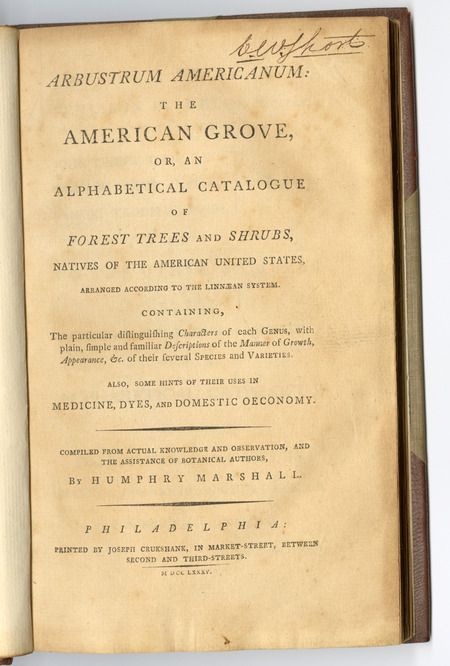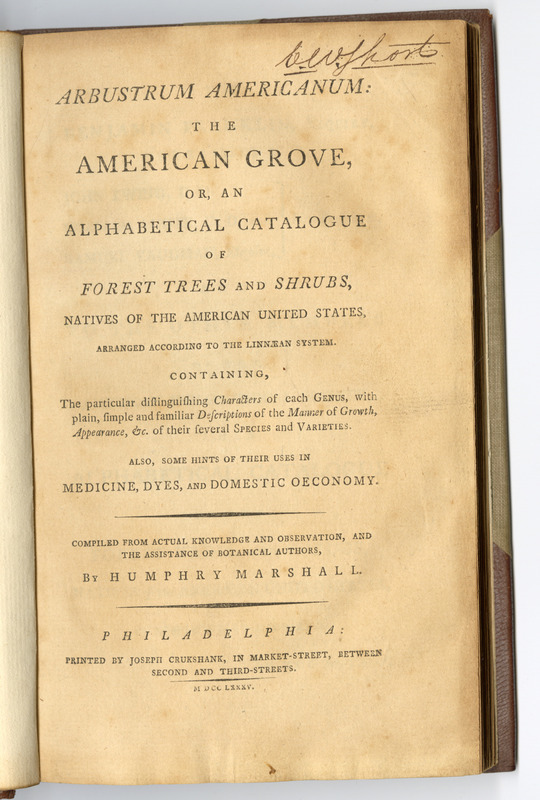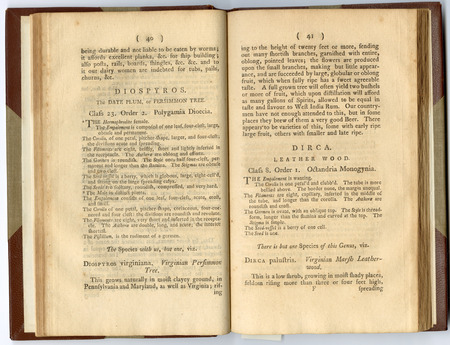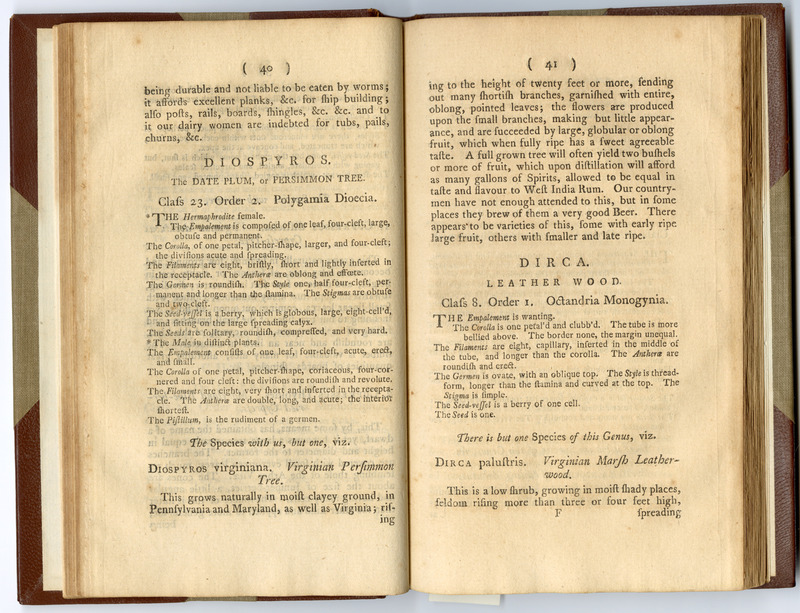COMPOUND OBJECT (3 Items)
Pawpaw (Asimina triloba) Item Info
- Title:
- Pawpaw (Asimina triloba)
- Description:
- In 1773, Quaker Humphry Marshall established the second botanical garden in the colonies, after John Bartram, his cousin. He was born in 1722 in Chester County, was educated to the age of 12 in stonemasonry, then worked as a farmer. He became interested in the natural world and started to collect books on the topic and specimens. By 1764, he had accumulated enough land and wealth that he had a greenhouse and an observatory. By 1785, he had published, Arbustrum Americanum, one of if not the first published work on just botany. In a 1935 article about Marshall, Francis Pennell described him as, ‘One can imagine the man of middle years, after his long hours of farm work, finding time to make nearly all its descriptions from actual living plants in his garden or in the woods of Chester County. Each genus and each species received a short but clear account…’ Called by some the "Father of American Dendrology", Marshall corresponded with Peter Collinson (who we talked about earlier) and John Fothergill (who we will talk about more), both of them in England. He also exchanged letters with Sir Hans Sloane. Paw Paw is native and Marshall found it during his studies of Pennsylvania plantlife for Arbustrum Americanum. He noted that ‘This grows common in rich bottoms or by river sides, in Pennsylvania… The fruit is often found growing two or three together, which soon falls off, becomes very mellow and turns of a yellow color'. (p. 10)
- Type:
- record
- Format:
- compound_object
Attribution
- Citation:
- "Pawpaw (Asimina triloba)", Quaker Roots Walking Tour, Friends Historical Library, https://github.com/QRoots/Quaker-Walking-Tour/items/qr5.html





